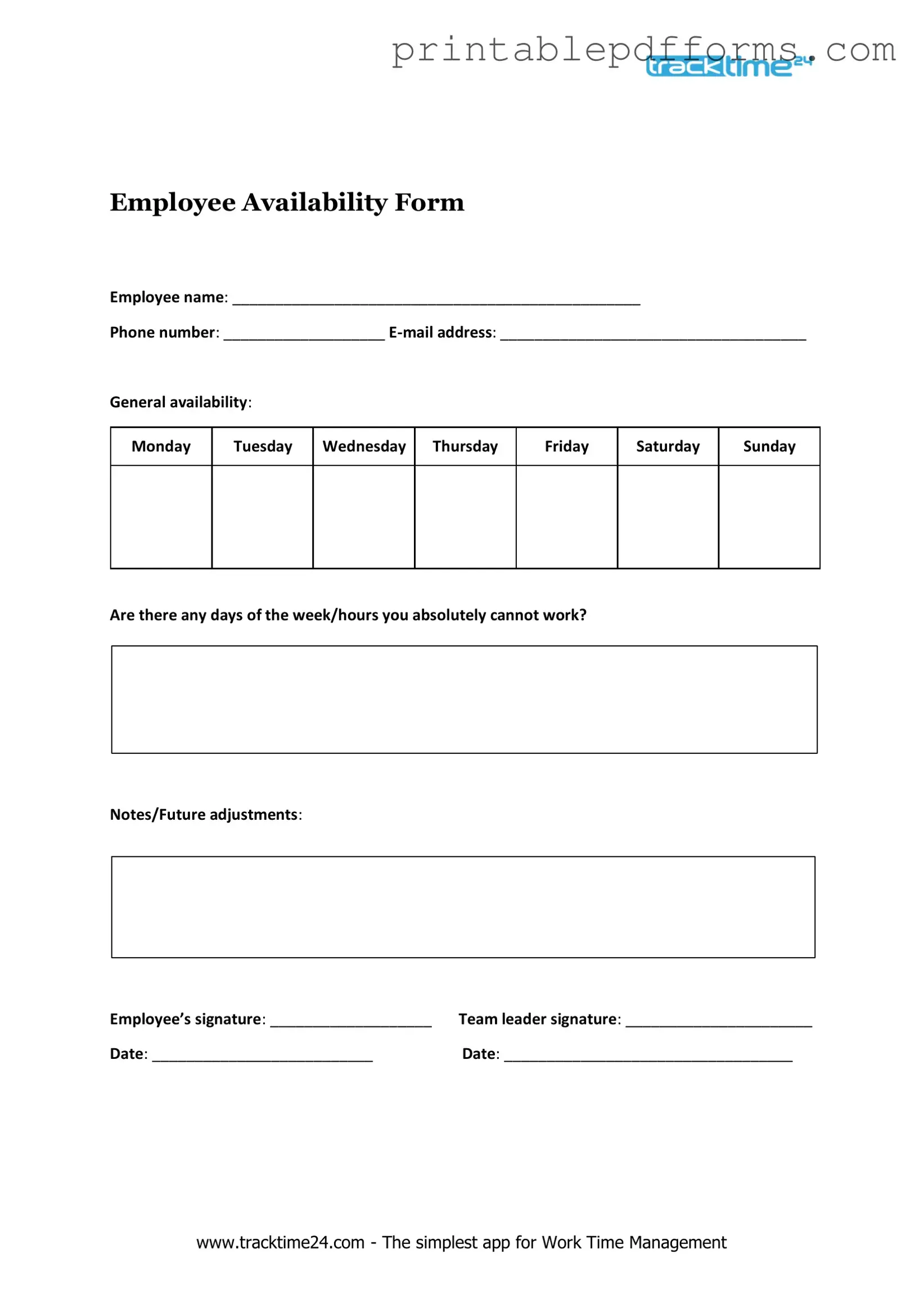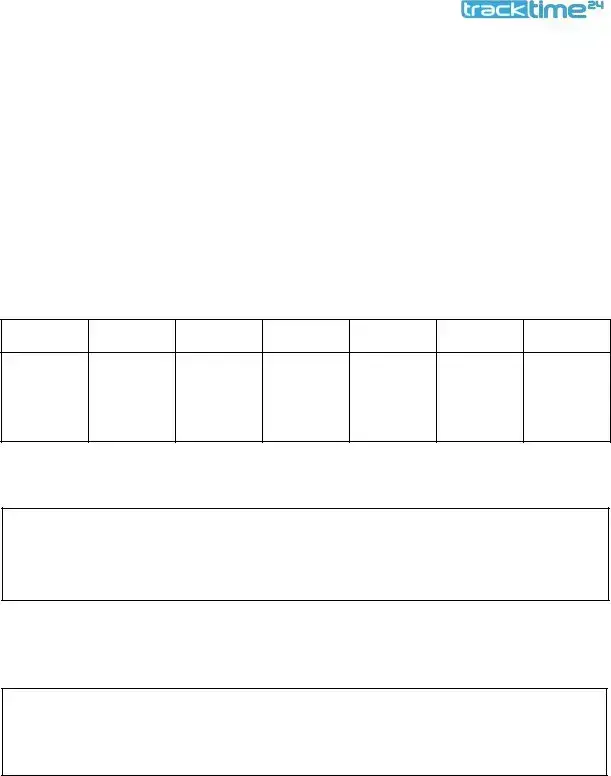The Employee Availability form serves as a crucial tool for employers and employees alike, facilitating clear communication regarding work schedules and personal commitments. This form allows employees to specify their preferred working hours, days of availability, and any scheduling constraints they may have. By gathering this information, employers can create more efficient work schedules that align with both operational needs and employee preferences. Additionally, the form can include sections for employees to indicate their availability for overtime or special projects, ensuring that managers have a comprehensive understanding of their team’s capacity. Ultimately, the Employee Availability form plays a vital role in promoting a balanced work environment, enhancing employee satisfaction, and optimizing workforce management.

